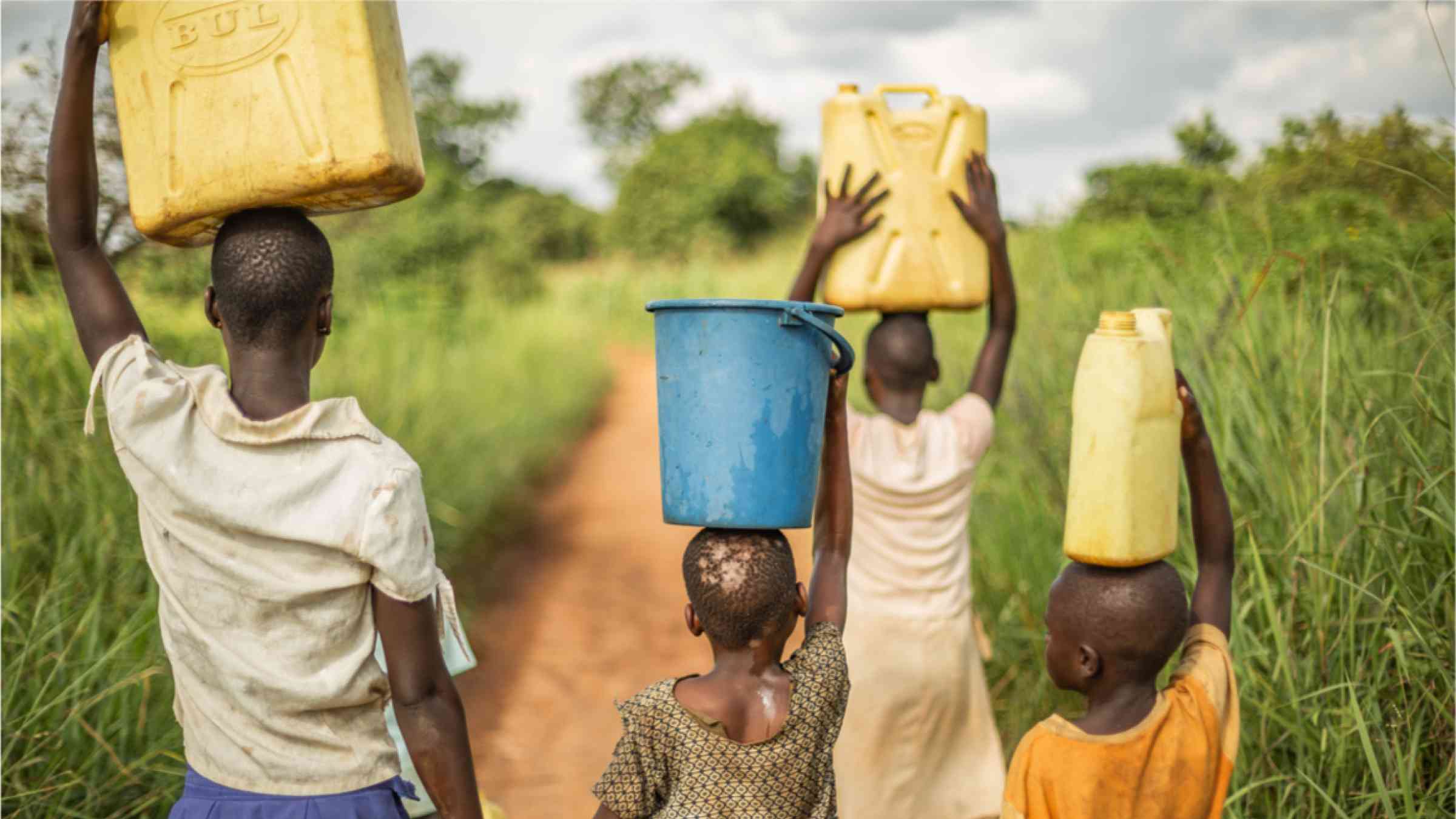On front lines of climate change, Tanzanian communities search for answers to deepening drought

For much of his life, cattle farmer Asherly William Hogo was consumed with finding water for his herd. Hogo, who is in his early sixties, still has vivid childhood memories of rising in the middle of the night, gathering his animals and setting out across Tanzania's parched central rangelands in search of water.
"We were really going a long way," says Hogo, who lives in the village of Ng'ambi in the Dodoma region.
But nightly forays like those are now a thing of the past. His village - located in an area hammered by deepening drought - was recently outfitted with a solar-powered borehole and large rainwater reservoir, providing residents with year-round access to water.
"Now we don't travel long distances like we used to," says Hogo.
The infrastructure work was part of a sprawling effort, led by the Office of the Vice President of Tanzania and the United Nations Environment Programme (UNEP), to help tens of thousands of rural Tanzanians struggling with drought and other impacts of climate change. Since 2018, the push, funded by the Global Environment Facility, has bolstered water supplies, helped communities build up their savings, and trained drought-bedevilled farmers in more resilient livelihoods, like beekeeping.
“This year is the biggest wakeup call we’ve seen in Tanzania in terms of what climate change is doing to rural families.”
- Mirey Atallah, UNEP
The project comes at a critical time for Tanzania, where climate change is playing havoc with long-established weather patterns. In April, a severe drought resulted in massive crop failures and livestock losses. In a cruel twist, the parched landscape was then hit with extreme rainfall, sparking floods that killed hundreds of people, decimated infrastructure and contaminated water supplies.
"This year is the biggest wakeup call we have seen in Tanzania in terms of what climate change is doing to rural families," says Mirey Atallah, Head of UNEP's Adaptation and Resilience Branch. "We need fast action on mitigation and adaptation. Otherwise, it won't only be the climate that is breaking down but also the communities themselves."
That is a future that worries families in Dodoma region.
"With climate change, the situation right now is scary," says father Amiri Tadei Puta.
For the past seven years, UNEP, the Tanzanian government and the Global Environment Facility have been helping communities adapt to drier weather and more erratic rainfall patterns. They have done this through community-driven land use planning. That process is considered crucial to avoiding what some have called a climate doom spiral for rural villages, many of which rely heavily on rain-fed agriculture.
"We know that the best climate defences are integrated, holistic and multipronged, drawing not only on built infrastructure but also on the power of nature and ecosystems," says UNEP's Atallah.
When the UNEP-led project was launched in 2018, its first priority was water. Engineers drilled 15 boreholes, 12 of them solar powered, and erected earthen dams capable of trapping a combined 3 million cubic metres of rainwater. That has helped to provide more than 35,000 people in five districts - Kaskazini, Kishapu, Mpwapwa, Mvomero and Simanjiro - with access to water.
"We used to face many challenges growing vegetables," says Malegesi Makene Chilongo. Her village recently received a borehole, allowing residents to set up small farms. "We are very grateful to those who brought this project to us."
Healing the land
Tanzania's indigenous trees and pastureland are a crucial part of the water cycle; they siphon rain into the earth, replenishing groundwater supplies, and act as natural barriers alongside rivers, absorbing floodwaters. But many Tanzanians in rural areas are forced to cut down trees for firewood, sparking a wave of deforestation fuelling Tanzania's struggles with drought and flooding.
The UNEP-supported project has planted more than 350,000 trees to rehabilitate degraded forest and stabilize riverbanks. That is part of an effort to rehabilitate 9,000 hectares of degraded forest and rangelands, and to place more than 38,000 hectares of land under sustainable management
"Planting trees has restored our environment," says Asnati Meshack, who lives in the northern district of Simanjiro.
But restoring ecosystems is futile if rural communities, many of which are poor, do not have ways to make a living. So, project experts trained residents in more resilient income-generating activities, like beekeeping, mushroom cultivation and sewing, and provided rural residents with equipment.
By the time the project wraps up in December 2024, some 3,800 households are expected to see their incomes rise.
"By diversifying income sources, the project has provided a safety net against the volatility of climate change," says Atallah. "Now when extreme weather decimates farmland, families have other alternatives to fall back on."
During a visit to one project site, Tanzania's Minister of State, Selemani Jafo, said: "Personally, I would like to take this opportunity to congratulate the leaders along with all citizens and executives for this great work done here. [This project] is empowering the people in a big way to build their economy."
That's a sentiment echoed by May Samwel Masulu, who lives in the northern region of Shinyanga. Through the project, she learned to build fuel-efficient brick stoves, a trade usually reserved for men.
"I'm so proud to be a craftswoman," says Masulu, who adds the project has helped counter gender inequality. "Let's leave behind the traditional attitudes that divide jobs by gender."